The Royal City of Meissen
The Saxon city of Meissen is unique — rich in history, culture, and art. For us, staying in Dresden, it was an easy choice for a one-day Meissen Scooter Trip.
Why Meissen?
- Excellent train connection with the 24-hour Saxon rail ticket.
- The cobblestones — everywhere.
- The Elbe Cycle Path from Dresden to Meissen.
- And, of course, Meissen porcelain.
Meissen Porcelain


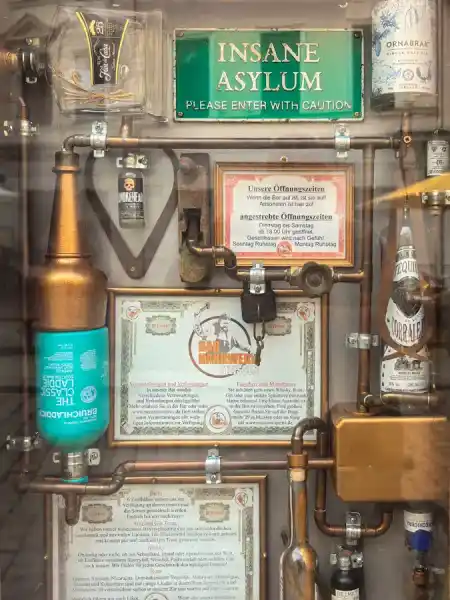

“Look at that. Are they serious?”
“Apparently yes,” I said, staring in disbelief into a shop window near Dresden’s rebuilt Frauenkirche.
“I guess I just can’t appreciate this kind of art.”
Porcelain for the price of a scooter — or two.
Meissen became famous in 1710, when Europe’s first porcelain manufactory was founded here. Until then, porcelain had come only from China and was worth more than silver. The alchemist Johann Friedrich Böttger discovered the secret of hard-paste porcelain, and the Saxon elector Augustus the Strong immediately decided to build a royal manufactory right here in Meissen.
The rest is history — and a lot of broken cups along the way.
Some patterns, like the world-famous Blue Onion (Zwiebelmuster), are still made today, and you can visit the Meissen Porcelain Museum any day. We, however, preferred to rattle our bones across the cobblestones of the old town — on scooters.
Altstadt: The Stone Heart of Meissen
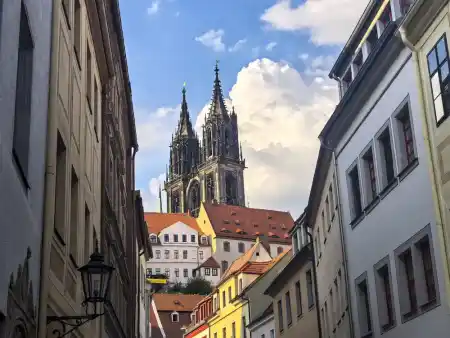

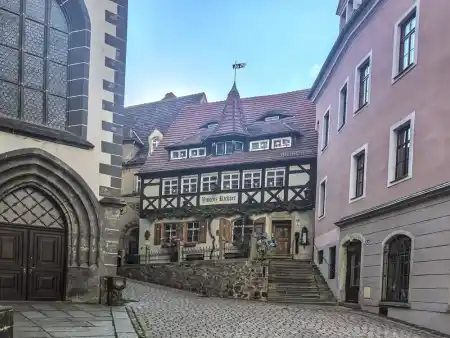
Meissen’s old town is a living museum. Narrow alleys, meticulously maintained half-timbered houses, and views of the Elbe make you feel like you’ve slipped into another century.
And those cobblestones… everywhere. Beautiful, but merciless.
The city center is calm, almost sleepy, and the main square is surrounded by Renaissance and Baroque facades that seem to hum quietly about their past.
We quickly learned that in Meissen, going uphill on a scooter might be safer than riding downhill. Luckily, we found an elevator near the castle square that took us gently back down to the Elbe — a medieval town with a modern soul.
Albrechtsburg Castle

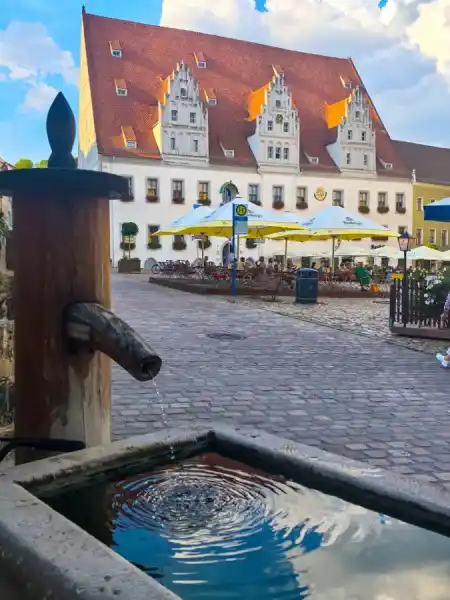
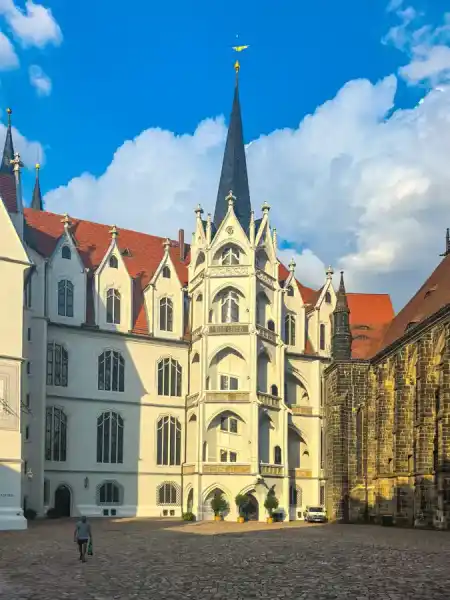
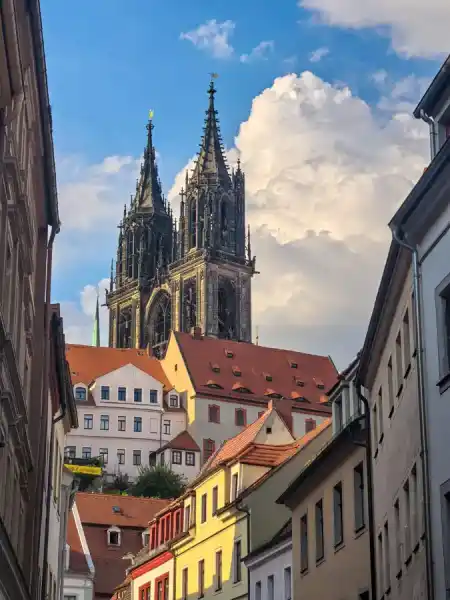
Albrechtsburg is considered the oldest castle in Germany. Even from the Elbe bridge, it rises above the city like a gothic dream — sharp lines, high towers, and a kind of calm authority.
This is where the first porcelain manufactory was originally established before being moved to its current site. The castle’s ribbed vaults, frescoed walls, and sweeping interiors make it one of Saxony’s most important Gothic monuments — a place where both faith and craft shaped stone.
Meißner Dom Cathedral
Right next to Albrechtsburg stands Meissen Cathedral, connected to the castle by a corridor. It holds the tombs of Saxon rulers and ranks among the most important Gothic cathedrals in Saxony.
Reaching the castle courtyard was no small feat. The climb from the Elbe on scooters was steep and punishing — not for the altitude, but for the cobblestones shaking every bone in our bodies. The old streets were built to test the faithful, and we passed the exam barely.
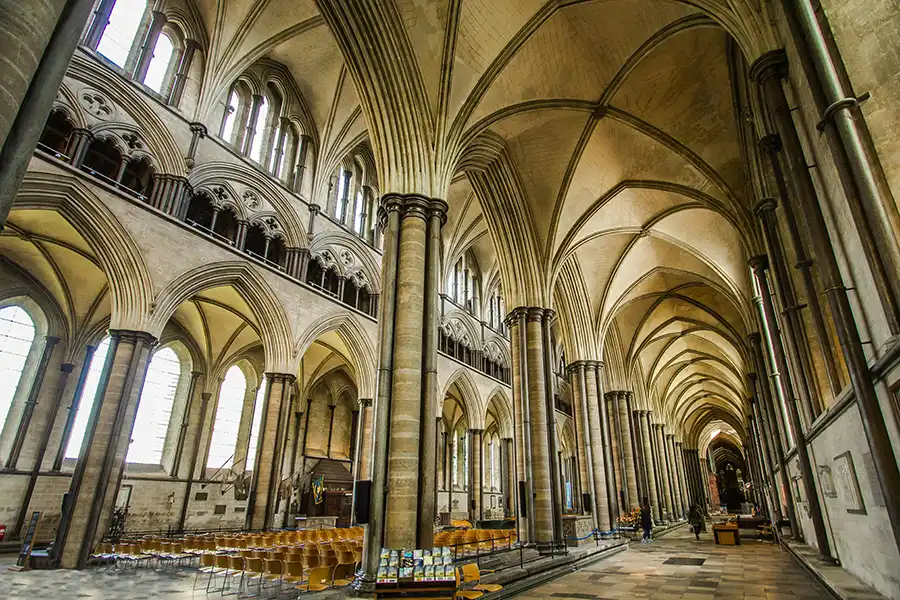
Müller-Thurgau and Riesling
The royal city of Meissen lies in Germany’s northernmost wine region — Sächsisches Weinbaugebiet. Wine has been cultivated here since the 12th century, and the region is known for its elegant Rieslings and light Müller-Thurgaus.
We’ve explored vineyards around Mosel and Bingen am Rhein before — but always by bike. This time, we skipped the hills. Time was short, and scooters were not made for vineyard slopes.
Instead, we rolled along the Elbe to a small harbor where we finally found a perfect spot to park our scooters safely and admire the view — one hand on the railing, the other holding a local Riesling.
Urban Touring: Scootering Through Meissen
Cities and rivers belong together. Frankfurt, Berlin, Prague, Krakow, Paris — they all prove that rule.
And scooters? They belong in cities.
They’re perfect for urban travel and river paths — light, fast, spontaneous. Pedestrians moves too slowly. On a bike, you stop too often. On a scooter, you flow — push, glide, stop, look, smile.
With good bearings and proper technique, you can cover 40 km in a day without breaking a sweat. You just push off — and fly.
Wheel Wisdom: What We Learned on Meissen’s Stones
When it comes to cobblestones, wheel size matters. The bigger the front wheel, the smoother the ride. Small wheels? Forget it. They’d disappear between the stones.
After a few close calls, I finally learned my priorities: safety first — especially avoiding the dreaded over-the-handlebar dive.
Meissen Scooter Trip – Practical commandments
- A strong frame you can trust.
- Big front wheel — 26 or 28 inches.
- Solid rear wheel to hold your line.
- Top-quality bearings for smooth rolling.
- Reliable brakes.
- A long, stable footboard to switch legs safely.

The best models? Kostka Tour Max, Trip, or Travel. Our favorite: the fast and fearless Kostka Trip Max, a true kilometer-eater.
Transporting the Scooter
Portability matters too. Enter the Fold.
After a year of scootering through European cities, we’ve learned this: if your scooter folds and fits in a bag, you can take it anywhere. And Meissen Scooter Trip was no exception.
Trains — no problem. We carried our scooters as hand luggage on express, regional, and EC trains without any issues.
Planes, however, are a different story. Airlines like Ryanair treat scooters over 10 kg as bicycles — and the price tag hurts. Regional buses can be unpredictable too — some drivers allow scooters, others don’t. It depends on the mood.
Our tip: avoid local bus roulette.
Use trains instead. They’re the most eco-friendly, comfortable, and often cheaper if you buy early. You arrive at the station, unfold your scooter, and you’re instantly the king of the city.
The Cradle of Saxony
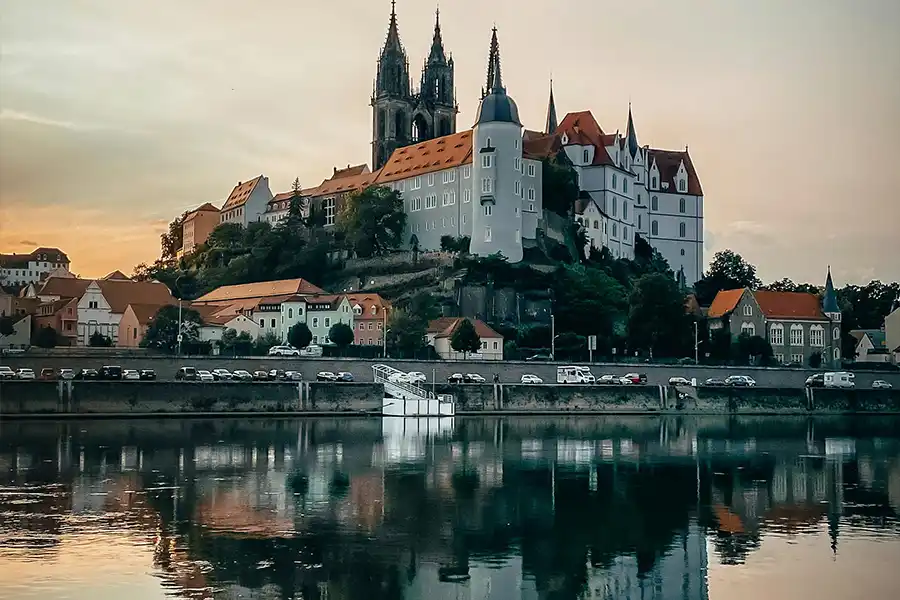
As early as 929, King Henry I built a fortress on a rocky hill above the Elbe — the beginning of Meissen and, with it, the Saxon state. The town later became a cultural and educational center, spreading its influence across the region.
Today, Meissen may not be the capital, but it remains the cradle — the place where Saxony began.
The royal city surprised us. History, art, architecture, and wine merge here into something that feels both grounded and timeless. The cobblestones, porcelain, vineyards, and medieval calm make Meissen the perfect destination for any scooter traveler starting from Dresden — especially along the Elbe cycle path or by Saxon rail.





